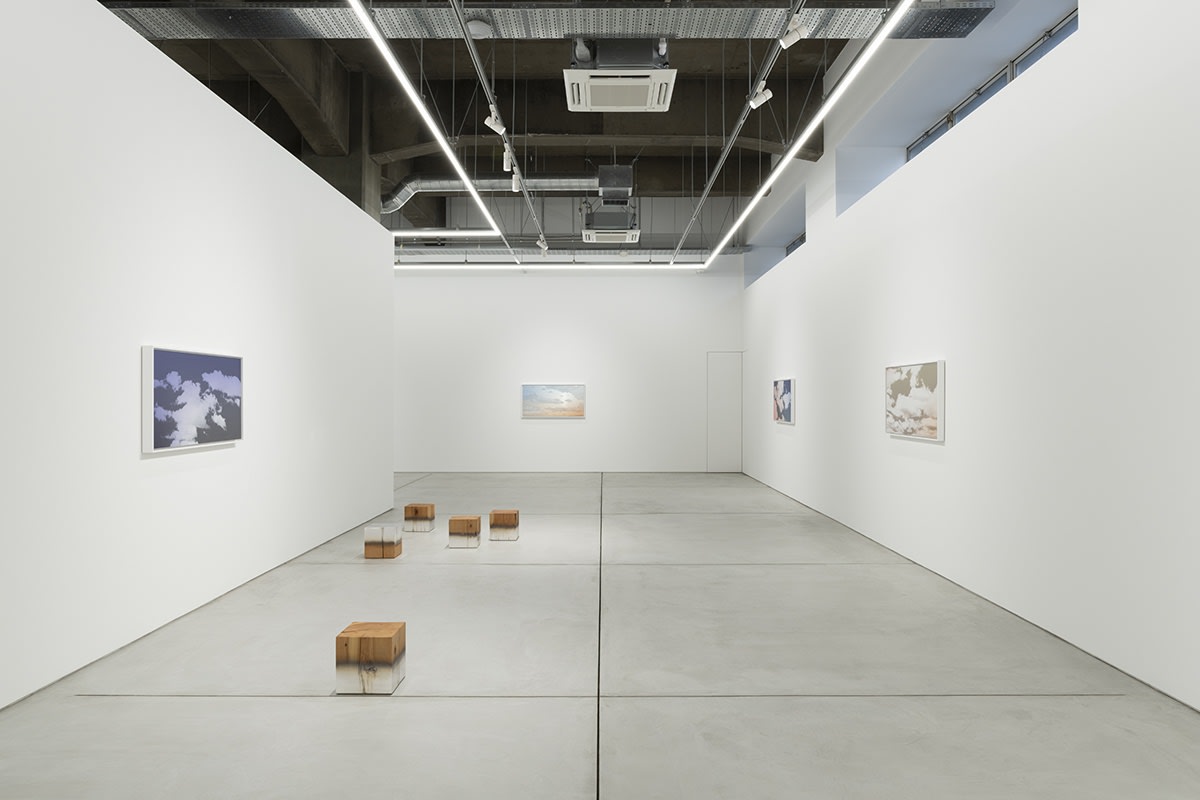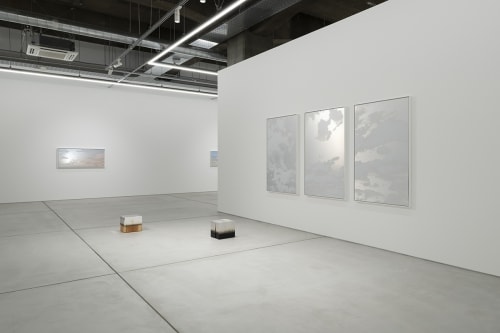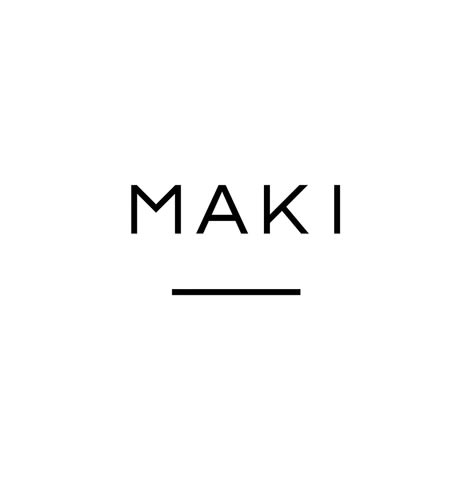Miya Ando, Mugetsu (Invisible Moon): MAKI Gallery, Tokyo
"It contains an awareness of the fundamental nature of reality—that all constituent forms comprising the universe are temporary."
–Miya Ando
In September of 2021, MAKI Gallery presented Mugetsu (Invisible Moon), by New York-based artist Miya Ando’s second solo exhibition at Tennoz II, Tokyo. Almost one year prior, Ando held MAKI Gallery’s largest exhibition to date—spanning across both Tennoz I and II—which featured several bodies of work including paintings, sculptures, and installations. For this exhibition, the focus turns to the artist’s signature Kumo (Cloud) and Unkai (Sea of Clouds) series, as well as her Shou Sugi Ban sculptures.
Through research of Japanese literature and historical texts, Ando locates poetic and multilayered Japanese expressions describing the varied qualities of moonlight, rain, clouds, and other phenomena found in nature. Ando is drawn to historic, mostly obsolete language expressing a philosophy of existence and a relationship to nature which she seeks to preserve and translate into visual form through her art. The Japanese expressions the artist locates, frequently appear in the multilingual titles (Japanese and English) she selects for her artworks. By offering an approximate English translation of these Japanese expressions, Ando reveals the variations in thought and perception between the two cultures that have informed her identity and experience. These Japanese words describing nature which inspire Ando's work, often convey nuanced sentiments not usually present in Western thought.

One such expression is Mugetsu, the title of this exhibition, which describes the phenomenon of clouds fully obscuring Chushu no Meigetsu, or mid-autumn moon—the brightest full moon of the year which falls on August 15th of the lunar calendar. When the viewer steps into the quiet and contemplative exhibition space, they are immediately surrounded by a sea of clouds devoid of the moon. The clouds appear to shift and stir due to the refractive quality of the aluminum composite substrate, which softly reflects transitory light. Many of the new works feature distinct hues which allude to a certain time of day, season, or geographic location. Clouds frequent the artist's oeuvre, as she believes they epitomize the impermanence of nature. Intrinsic to the lexicon of Zen Buddhism, the prefix mu—roughly translating to "nothingness"—plays a key role in Ando's practice, as she deems "it contains an awareness of the fundamental nature of reality—that all constituent forms comprising the universe are temporary."
Ando's sculptures are a continuation of this thought, using reclaimed wood and silver nitrate to further explore the cycles of nature and the passage of time. Matsu, or pine, which has a long history in Japanese culture, is cut into a simple, geometric form and partially coated with silver nitrate or charred in the traditional style of shou sugi ban.The parts left raw display the wood's individual characteristics, particularly the mokume, or wood grain. In contrast, the naturally reflective silver nitrate finish has a mirrored effect that reflects its surroundings, much like the artist's aluminum composite paintings. Sculptures that are half charred and half applied with silver nitrate present two opposing states: one reflecting light and one absorbing light. Each iteration is a preservation of time, with the nenrin—or growth rings—exposed, revealing the tree's long and storied history. Ando solidifies time and transforms what was once a living thing into a catalyst for meditation. Simultaneously working with organic and inorganic materials, she actively explores the fragility and temporality of both nature and the human experience.
Text courtesy of MAKI Gallery












